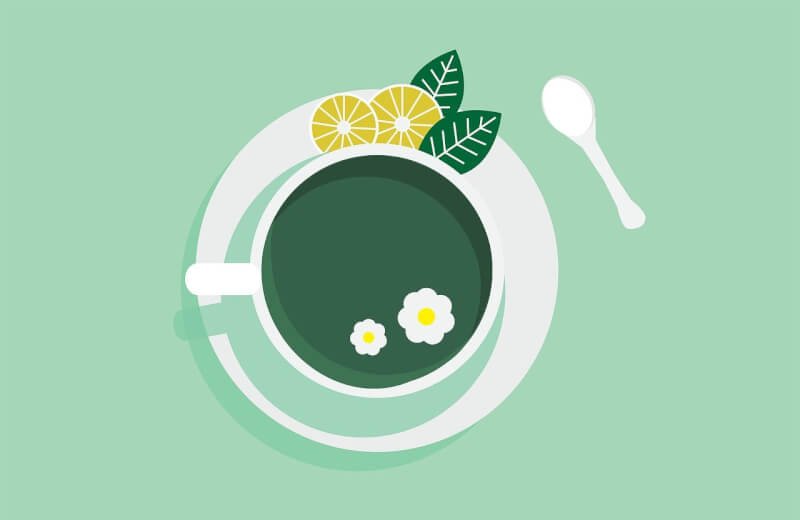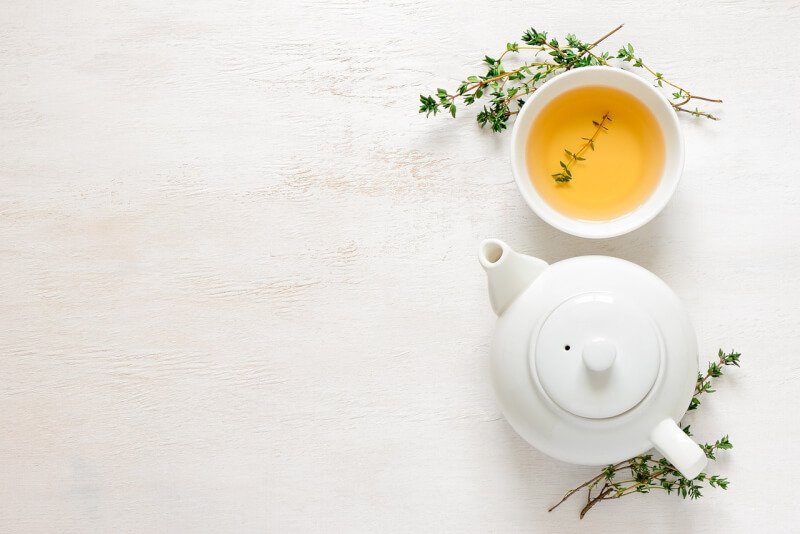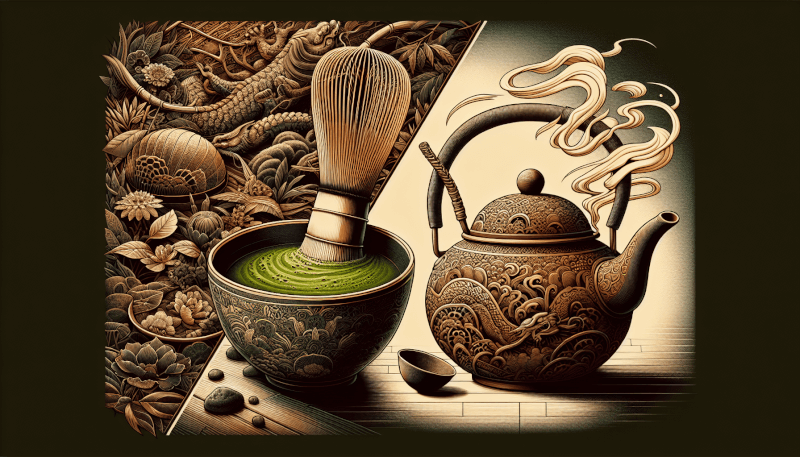Step into the captivating world of tea brewing as you embark on a journey to explore the rich traditions and enchanting rituals that accompany this age-old beverage. From the delicate ceremonious practices of Japan’s matcha to the aromatic treasures of India’s chai, this article will unlock the secrets and nuances behind tea brewing from a variety of cultures, inviting you to indulge in a truly immersive and fascinating experience..join

Heading 1: Chinese Tea Brewing Traditions
Chinese tea brewing traditions have a long and fascinating history, dating back thousands of years. Tea is deeply ingrained in Chinese culture and has been used for medicinal purposes, as well as for its calming and invigorating qualities. The brewing process is considered an art form, with specific techniques and utensils used to bring out the best flavors and aromas in each variety of tea.
Subheading 1: History and Origins
Tea originated in China during the Shang Dynasty (1600-1027 BCE) and has been an integral part of Chinese culture ever since. Legend has it that Emperor Shen Nong discovered tea when tea leaves accidentally fell into his boiling water. He was impressed by the refreshing taste and the invigorating effect it had on him. From there, tea cultivation and consumption spread throughout China, evolving into an important aspect of Chinese daily life.
Subheading 2: Tea Brewing Utensils
Chinese tea brewing involves the use of unique and specialized utensils. The most essential tool is the teapot, often made from clay or porcelain, which is used to steep the tea leaves. Clay teapots, such as those made from Yixing clay, are highly regarded for their ability to absorb the flavors of the tea and enhance the brewing process. Other essential utensils include tea cups, tea strainers, tea trays, and tea scoops.
Subheading 3: Traditional Tea Varieties
China is renowned for its wide variety of traditional teas. The main types include green tea, black tea, white tea, oolong tea, and pu-erh tea. Each type has its own unique characteristics and brewing methods. Green tea is known for its fresh and grassy flavor and is typically brewed at a lower temperature for a shorter time. Black tea, on the other hand, has a bold and robust flavor and is often enjoyed with milk or sweeteners. Oolong tea falls somewhere between green and black tea in terms of flavor and is known for its floral and fruity notes.
Subheading 4: Brewing Techniques
Chinese tea brewing involves a delicate balance of time, temperature, and infusion techniques. The water temperature must be carefully controlled to bring out the best flavors of the tea leaves. The amount of tea leaves used and the steeping time also vary depending on the type of tea. For example, delicate green teas require lower water temperatures and shorter steeping times, while robust black teas may need hotter water and longer steeping times. Gongfu tea brewing is a popular technique in China, which involves multiple quick infusions to fully extract the flavors of the tea leaves.
Subheading 5: Tea Tasting and Appreciation
Tea tasting and appreciation is an important part of Chinese tea culture. Tea connoisseurs carefully observe the color, aroma, and taste of the tea to discern its quality and characteristics. The tea is poured into small cups, allowing the drinker to savor the flavors and aromas. Tasting notes include observations on the tea’s appearance, fragrance, and taste, as well as its aftertaste and overall balance. Appreciating tea is not only a sensory experience but also a way to connect with nature and promote mindfulness.
Heading 2: Japanese Tea Brewing Traditions
Japanese tea brewing traditions have been greatly influenced by Zen Buddhism and the tea ceremony, which is both a cultural practice and a way to achieve inner peace and harmony. Tea, known as “ocha” in Japanese, holds a special place in Japanese society and is consumed throughout the day.
Subheading 1: Matcha Preparation
Matcha, a powdered green tea, is the cornerstone of Japanese tea brewing traditions. The tea leaves are carefully ground into a fine powder and then whisked with hot water using a bamboo whisk. This creates a frothy and vibrant green tea with a rich and umami flavor. Matcha is often used in tea ceremonies and is enjoyed for its unique taste and health benefits.
Subheading 2: Tea Ceremony
The Japanese tea ceremony, also known as “chanoyu” or “sado,” is a highly ritualized practice that emphasizes harmony, respect, and tranquility. It involves the preparation and serving of matcha tea in a traditional tearoom or a specially designated area. The host carefully performs each step of the ceremony, from the cleansing of the utensils to the precise whisking of the matcha. Guests are expected to observe proper etiquette and appreciate the artistry and mindfulness of the tea ceremony.
Subheading 3: Unique Tea Utensils
Japanese tea brewing utilizes unique utensils, many of which have been passed down through generations. The main tools include a bamboo tea whisk (chasen), a tea scoop (chashaku), a tea bowl (chawan), and a tea caddy (natsume or chaki). These utensils are carefully chosen for their aesthetic qualities and functional purposes. The design and craftsmanship of the utensils symbolize the attention to detail and reverence for nature that are characteristic of Japanese tea culture.
Subheading 4: Types of Japanese Tea
In addition to matcha, Japan is known for its other traditional teas, such as sencha, gyokuro, and hojicha. Sencha is the most commonly consumed green tea in Japan and is known for its grassy and refreshing flavor. Gyokuro, a shade-grown tea, has a sweet and rich taste and is considered a high-quality tea. Hojicha, on the other hand, is a roasted green tea with a nutty and toasty flavor. Each tea has its own unique characteristics and brewing methods.
Subheading 5: Japanese Tea Rituals
Tea rituals are an integral part of Japanese tea brewing traditions. These rituals vary in formality and complexity, ranging from the elaborate and stylized tea ceremonies to more casual tea gatherings among friends or family. The rituals often involve the preparation and serving of tea, accompanied by traditional Japanese sweets (wagashi). The focus is on creating a serene and meditative atmosphere, where guests can appreciate the beauty of nature and the art of tea.

Heading 3: Indian Tea Brewing Traditions
India is one of the largest tea producers in the world and has a rich tradition of tea brewing. Tea, known as “chai” in India, is deeply ingrained in Indian culture and is consumed throughout the day. Indian tea brewing traditions are diverse and vary across different regions and communities.
Subheading 1: Masala Chai Preparation
Masala chai, a spiced milk tea, is a popular and iconic beverage in India. It is typically made by boiling tea leaves with a mixture of aromatic spices, such as cardamom, ginger, cinnamon, and cloves, in a pot of water. This creates a flavorful and invigorating chai with a hint of warmth and spice. Masala chai is often sweetened with sugar and served with milk, making it a comforting and satisfying drink.
Subheading 2: Ayurvedic Tea Blends
India is also known for its Ayurvedic tea blends, which are based on the principles of Ayurveda, a traditional system of medicine. These blends are crafted using various herbs, spices, and botanicals that are believed to promote health and well-being. Some popular Ayurvedic tea blends include tulsi (holy basil) tea, ginger tea, and hibiscus tea. Ayurvedic teas are valued for their medicinal properties and are often consumed for their therapeutic benefits.
Subheading 3: Regional Tea Specialties
Each region of India has its own unique tea specialties. For example, the Assam region in northeastern India is famous for its strong and malty black teas, while Darjeeling, located in the foothills of the Himalayas, is known for its delicate and floral black teas. In southern India, the Nilgiri region produces teas with a fragrant and fruity flavor. These regional variations highlight the diverse terroir and tea-growing conditions in India.
Subheading 4: Tea in Indian Culture
Tea holds a significant place in Indian culture and is associated with hospitality and socializing. In many Indian households, tea is served as a welcome drink to guests, representing warmth and hospitality. It is also an integral part of social gatherings and celebrations, where it is enjoyed alongside snacks or sweets. Tea stalls, known as “chai wallahs,” are a common sight across India, offering a place for people to gather, chat, and enjoy a cup of tea.
Subheading 5: Tea Rituals and Significance
In some Indian communities, tea plays a role in various rituals and ceremonies. For example, in certain regions, tea is offered to deities during religious festivals as a way to seek blessings and show devotion. Tea is also used as a part of traditional remedies and rituals to ward off evil spirits and promote healing. These tea rituals reflect the spiritual and cultural significance of tea in Indian society.



